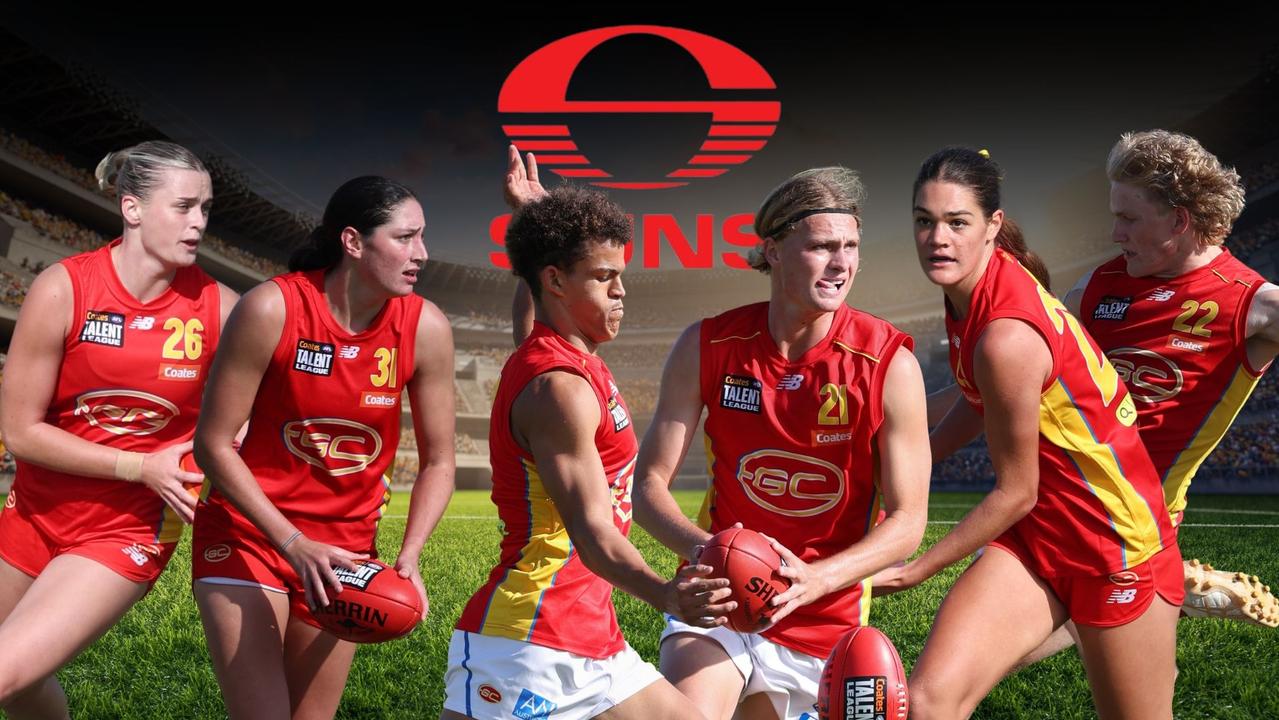Revealed: Best Bulls players since 1976 named in Super Sides
Our Bulls’ greatest all-time cricket teams revealed here, along with bold predictions on what a Qld Futures team in 2029-30 and beyond might look like. The two part series starts today.

Sport
Don't miss out on the headlines from Sport. Followed categories will be added to My News.
Welcome to this special report highlighting Queensland’s greats of the past, acknowledging our champions of today and predicting a Rookies’ Future side which could be representing the state post 2030.
In a two part special, we firstly announce our three super teams from players who represented Queensland post 1976.
OUR LATEST MEGA CLUB CRICKET COVERAGE HERE
Then tomorrow, Wednesday, we select our greatest pre-1975 outfit. But we also peer into our crystal ball and select a side which could be representing the state by 2029-30, while also naming a crack Future’s Rookie side made up of gun teens of today.

Footnote: To be considered players had to have played a minimum of 30 games. That criteria meant the likes of Ryan Harris, Shane Watson, Scott Muller, Mitchell Johnson and Matthew Kuhnemann were not eligible.
We’d also like to acknowledge coaches John Buchanan (two), Bennett King (three) and Terry Oliver (one) who oversaw Queensland’s first six Sheffield Shield wins. That 1994-95 triumph with Buchanan as coach was as monumental, in our minds, as when Artie Beetson led Queensland on in the first State of Origin in 1980.
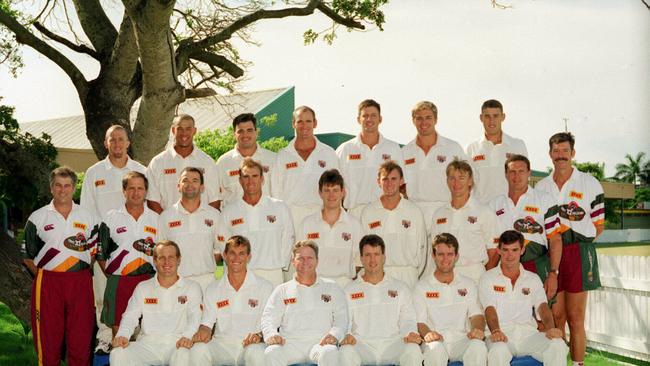
Then came Darren Lehman (one) and Wade Seccombe’s marvellous coaching efforts to win in 2020-21 and 2017-18. Wade is featured below among our Super Teams.
RELATED LINKS
STEVE HOGAN’S BEWILDERING HUNDRED FOR THE GATORS
OUR 3-2-1 FOR LAST ROUND ACTION, SEPT-OCT
OUR LATEST 3-2-1 VOTES MENS, WOMENS AND LORD TAV - SEPT 23-24
OUR BEST TEAMS SINCE 1976 - THE NO.3 SIDE
Rob Kerr (5036 runs at 39.34)
We feel uneasy naming the following dozen cricketers in a so-called “No.3 side” because they were all A+ champions for Queensland who would not be out of place in the top side. And one of the very best was Kerr, a stylish Norths opener of considerable class.
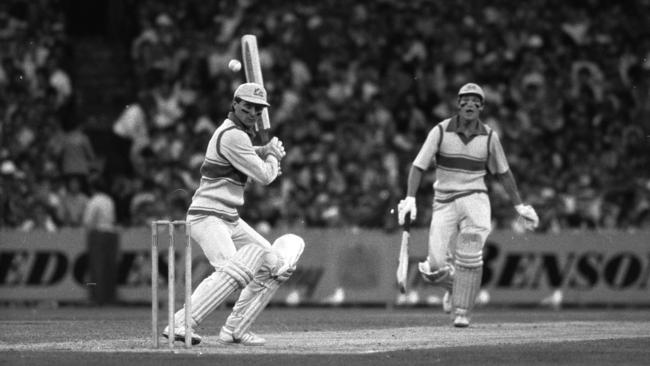
He had a fabulous record which would stand up in any era, but the younger generation also need to take into account he played in an era where bats were like the size of toothpicks, when their were full sized boundaries and no helmets. He’d also often confront Test bowlers who, in that era, played as many Shield games as they did Tests. The Norths opener scored more than 5000 runs for the state and two Tests - having the misfortune of running into New Zealand great Sir Richard Hadlee at the peek of his powers.
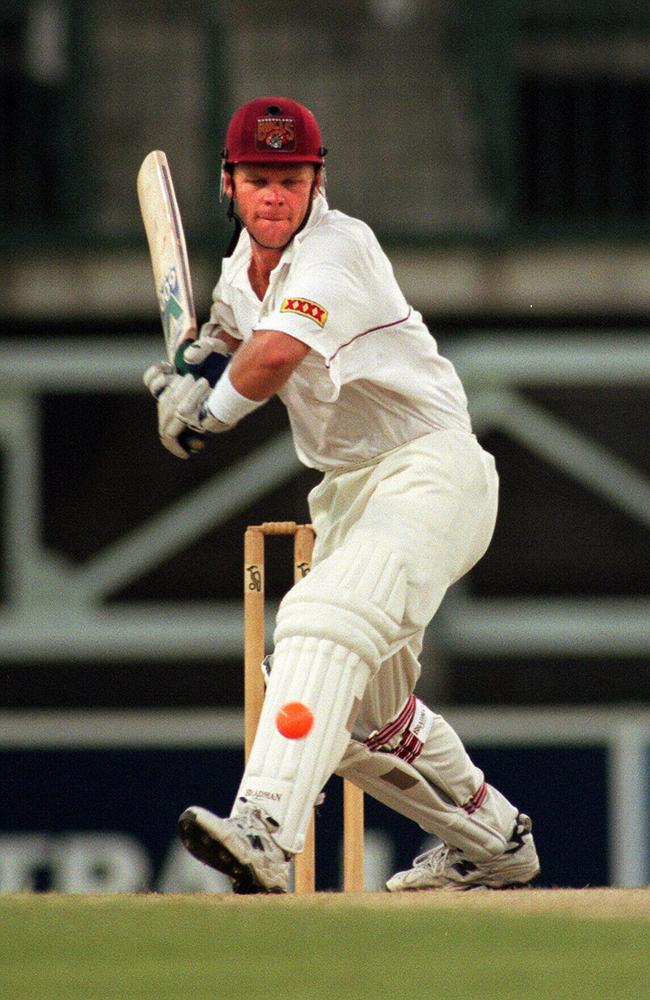
Trevor Barsby (6052 runs at 34.78)
Barsby was a knockabout personality to have around the dressing room, an opener who
scored his runs quickly, often at a run-a-ball pace. Blessed with a great eye – he was also a first grade hockey player – Barsby’s rise from an under performing player with promise in a Sheffield Shield champion can be partly attributed to Bulls coach John Buchanan and the dressing room and training atmosphere he helped generate. He was a Gators champion.
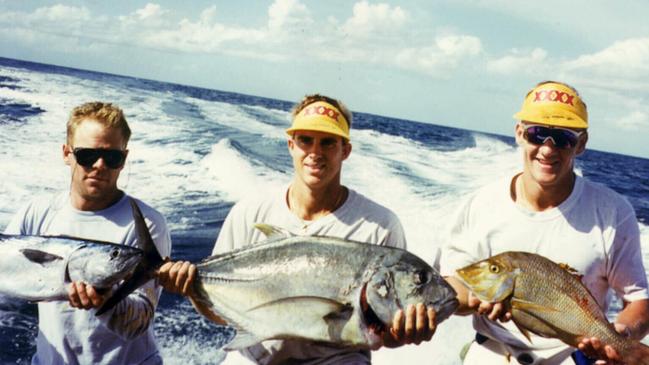
That environment helped Barsby find his feet and believe in himself. Few can ever match his farewell match:
+ it was his 100th game for Queensland
+ he scored a first innings century
+ he took possibly the greatest short leg catch of all-time
+ and he helped Queensland win its second Sheffield Shield.
RELATED LINKS
3-2-1 LATEST - WHO SHONE BRIGHTEST ACROSS SEPT 16-17 ACTION
LORD TAV’S ROUND 1; HORNETS WIN T20 PREMIERSHIP
David Ogilvie (2325 runs at 37.50)
Nick-named Tobin Bronze by former Wallaby coach Allan Jones - Tobin Bronze was a champion race horse - BGS old boy and University star Ogilvie was an athlete marvel and a thrilling No.3 batsman.
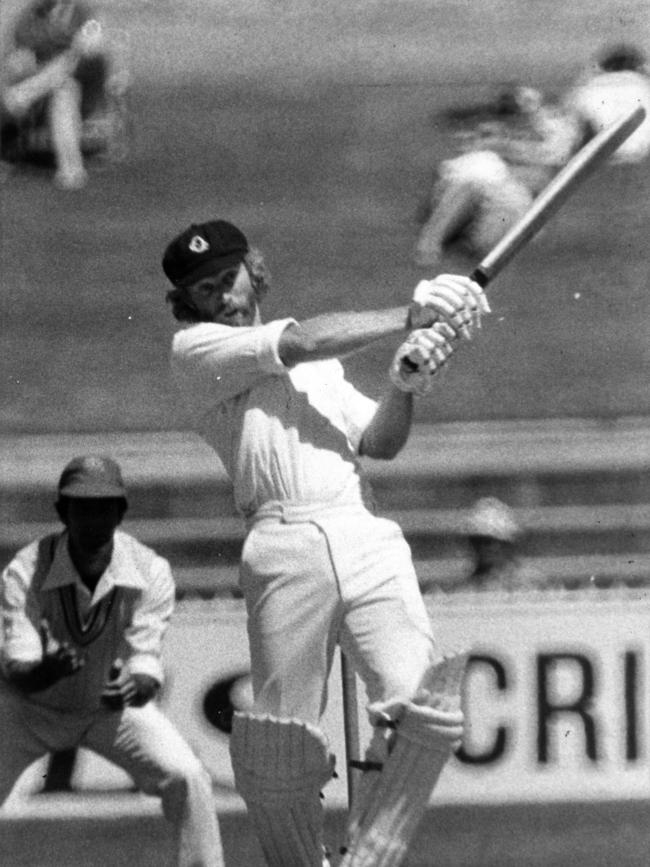
A teacher, he played just five seasons of first class cricket but made a dramatic impact, including a run of six centuries in a season. A superb gully fieldsman, he took a match winning catch on Test debut when he somehow turned a full blooded cut shot from Indian century maker Gundappa Viswanath into a remarkable reflex catch. India were closing in on victory but Ogilvie’s catch turned the match. He played Tests against India and the West Indies.
Martin Kent (2341 runs at 37.15)
He was Nick-named “Super’’ after the Superman character Clark Kent, and he was indeed a super batsman. The scorer of 140 runs on debut in 1974, the Sandgate-Redcliffe batting ace lost two seasons off his official playing records by opting for World Series Cricket (1997-79), but that cricket was the making of him. In 1981 Kent, a glorious driver, scored 54 and made two sparkling 40s from six Test innings on the ill-fated Ashes tour, setting him up for a bumper home summer. He played for Sandgate-Redcliffe.

Kent was then chosen as Australia’s No.3 for the First Test against Pakistan at the Gabba, but withdrew due to his back injury and retired months later.
Joe Burns (6922 runs at 39.10)
A wonderful servant of Queensland cricket, Burns has been so versatile he was good enough to score Test centuries as an opener, or control an innings batting in the middle order. In 23 Tests he scored 1442 runs at 36.97, and those who witnessed it will always fondly remember his blazing 129 against New Zealand at the Gabba when he launched a succession of lofted shots down the ground. He is a Norths legend.

He could also score big hundreds, the mark of a special player. A renowned great team player, Burns is a member of the 100 club.
Matt Renshaw (3786 runs at 37.87)
Is anyone convinced we have not seen the last of Renshaw in an Australian team? Absolutely not. There is much to admire about Renshaw, including his patience and the price he puts on his wicket. But we also admire the way he has evolved his game to such an extent, he can play shots all around the wicket, bat No. 1, No. 4 or No.6. Only last Sunday he impressed again to score his 11th Shield century. Renshaw is also a noted club man, always the first to help with mowing or line marking or the covers at Toombul. Watch this space.

Phil Carlson (113 wickets at 23.38, 2642 runs at 29)
Between 1970 and 1980, Carlson, Trevor Hohns (see below) and John Maclean were the backbone of Queensland’s middle order once Sam Trimble and Greg Chappell had impacted matches. Carlson was the complete package as an all-rounder – he was an aggressive batsman, a brilliant gully fieldsman and a wonderful medium pace swing bowler whose bowling record is one of the best in Queensland Shield history.

Chris Hartley (535 catches, 15 stumpings; 6038 runs at 34.70)
We just could not leave him out, could we? We tossed and turned over whether to include Hartley, the great John Maclean or the athleic Peter Anderson. If we were being perfectly honest, Anderson would have been a best, pure gloveman among the trio, while Maclean was a grizzly 86 Shield match veteran who rose to play Test cricket just as dusk was closing in on his career. But in the end we opted for Hartley whose record is extraordinary at every turn. Hartley was a remarkable all-rounder who should have played Test cricket, and his omission remains the greatest injustice in Queensland sport that this writer has observed.
Trevor Hohns (3963 runs at 28.30; 188 wickets at 38.98)
A veteran of 105 matches for Queensland, Hohns was a fighting left handed who was great in a crisis. His straight statistics do not do his batting justice because his average fell away sharply late in his career. But as Hohns got lower down the batting order, his leg spin blossomed – to such an extent he was a key man in Australia’s attack which reclaimed the 1989 Ashes in England. He is a legend at the Gators where he has a field named after him.

After cricket, Hohns was a distinguished selector, including many years as chairman.
Ashley Noffke (242 wickets at 27.48, 2430 runs at 27.93)
Noffke was a champion stump to stump right arm medium-fast bowler, super consistent who could generate some bounce and pace. Batsman could never drop off against him and had he not injured his ankle, Noffke would have toured with Australia on the 2003 Ashes tour. Noffke also developed into such a good batsman, sometimes under a Maroon helmet he looked like batting champion Martin Love. He was a very fine player who averaged 27 with bat and ball.

Joe Dawes (238 wickets 24.94)
Dawes was one of the great improvers of his era who got better with age. A tall, broad shouldered former policeman, Dawes would have been the arch enemy of every curator around the country because of his pounding, heavy footed approach to the wicket carved turf out of the surface. Like so many Queensland fast bowlers who benefited from Craig McDermott’s experience passed down the line, Dawes learned to be just as effective on flat tracks as he was on a bowler friendly Gabba stripe.
Luke Feldman (229 wickets at 25.75)
This bloke’s record is astounding. Take a close look at it – 229 wickets at 25.75, including a strike rate of 50.89. That is absolutely top shelf stuff, and his lion-hearted fast medium paceman just had to be included at any cost in one of our top three teams since 1975. He is named last here, but he was never going to miss out. He was a Valley great.
OUR BEST B TEAM SINCE 1976 - side No.2
Kepler Wessels (4779 runs at 54.30)
One of our hardest decisions was leaving Wessels out of our top team. Wessels was an extraordinary run machine who averaged 80 for Valley, 54.30 for Queensland and around 40 across Tests for Australia and his native South African.

Now a resident of Brisbane, the left handed Wessels scored an Ashes record 162 and 46 on debut at the Gabba. That was memorable, and so was his gallant 70 in a total of 170 when New Zealand legend Richard Hadlee took 9-52 against Australia at the Gabba.

However, arguably his best Test innings was a 170 against the brutal West Indian attack on a two-paced SCG which set up Australia’s only Test win of the summer. Brave to the core, he was battered and bruised, but left standing. The bloke is a legend in these parts.
Jim Maher (9086 runs at 39.33)
This position was up for grabs – Rob Kerr, Joe Burns, Matt Renshaw, Trevor Barsby - all had strong claims. In the end Maher gave us 9068 reasons to pick him – that is how many runs he scored. But Maher was more than a World Cup winner and a six-time Sheffield Shield winning batsman. His personality helped the success of the side. Quick-witted Maher, who wore his heart on his sleeve, could break the tension with his funny man antics and that trait, along with his love of the cap, contributed to his mountainous career which spanned 141 matches. A left handed from Babinda south of Cairns, Maher was a Nudgee College GPS premiership winning star who turned promise into performance. He played mainly for Norths.
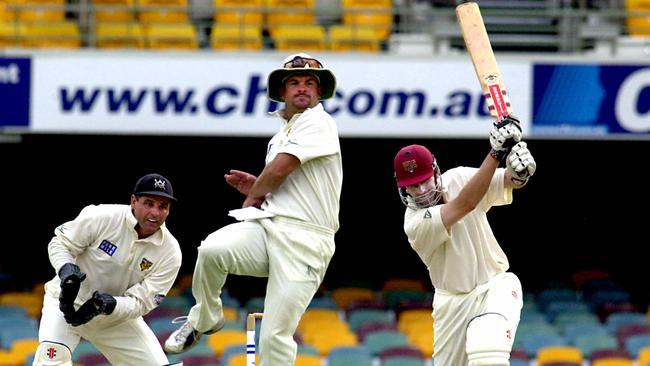
Martin Love (1013 runs at 45.23)
How isn’t this bloke in our top side? It certainly wasn’t easy leaving either Love or Kepler Wessels (see above) out. A glorious batsman, Love was a cross between classical stroke players, Test batsmen Mark Waugh and Brian Booth. He would caress the ball into the gap and had better timing than a Swiss Clock. You could spend hours watching him bat, and fortunately, we did. Mere statistics do not do the quietly spoken Love justice, and he so richly deserved the six Test matches he played. He was also an elite first slip fieldsman.
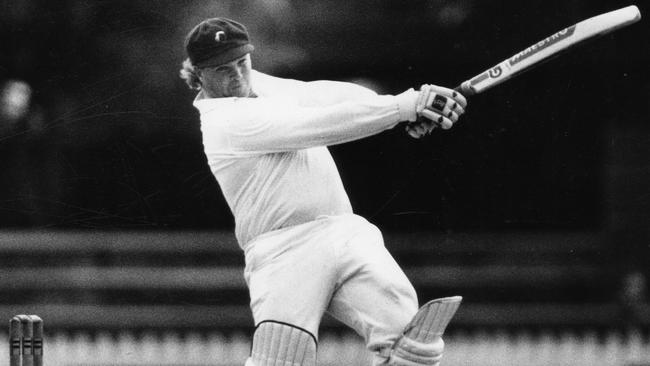
Greg Ritchie (6096 runs at 43.54)
Another Mr Natural, Ritchie was a graceful batsman who was considered for our top side. Stylish, he had time and oozed with class. He’d get his elbow up right over the ball in defence, then next ball effortlessly lean into a cover drive or rock onto the back foot and pull a delivery square. A veteran of 35 Tests, Ritchie was very, very good.

Andrew Symonds (4843 runs at 35.09, 113 wickets at 30.98)
A little bit like late Steve Irwin, it remains difficult to believe that Symonds is now dead (killed in a car crash outside of Townsville). He was Queensland to the core, a person who wore the same, weather beaten Bulls cap season in, season out.

Symonds loved that cap, the state, his teammates. And we loved him - not just for his explosive batting and match turning fielding - but for the person he was.
James Hopes (5069 runs at 30.72, 296 wickets at 26.75)
What an extraordinary career Hopes had. There were times when he would open the batting and the bowling in Australia’s one-day side, and days where he was Queensland top scorer with the bat, then take the new ball later in the day and snare five wickets. Hopes’ record is simply amazing and he deserves selection here in our No.2 side. He played for Norths.
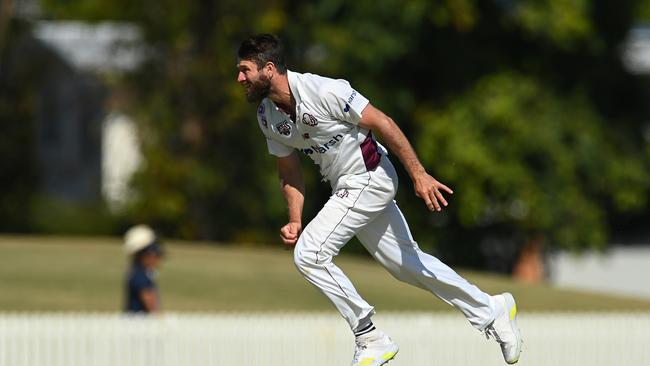
Michael Neser (226 wickets at 23.95, 2293 runs at 28.66)
What a wonderful swing bowler and ever improving batsman this fellow is. There is no better sight in Australian cricket than seeing Neser pitch up and let the ball do the work. He should have played more Test cricket - particularly in England - and hopefully he will in the future. But if he doesn’t, I suppose we should be grateful that he has worn the Baggy Green twice because some, like grand Queenslanders Chris Hartley, Sam Trimble and Wade Seccombe, never had that honour bestowed upon them. The TSS old boy is a Dolphins great.
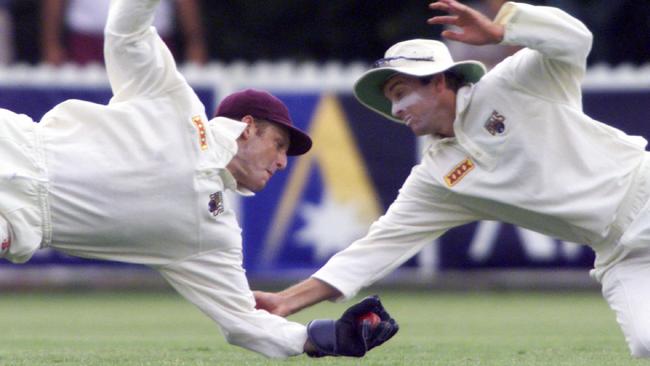
Wade Seccombe (3207 runs at 25.05, 474 catches, 14 stumpings)
Thank goodness Seccombe at least had the recognition of making the 2004 Ashes touring party, because it would have been a national disgrace had he not represented Australia in some shape or form. What a wicketkeeper, a man with golden gloves who never failed to make the stumps in the field, even when Andrew Symonds was firing them in from cover point. His catching to Carl Rackemann, Craig McDermott, Andrew Bichel, Michael Kasprowicz, Adam Dale, Mitchell Johnson, Joe Dawes, Ashley Noffke and co was phenomenal. A Darling Downs product, we rate his catch diving forward to grab an under edge generated by Rackmann against Zimbabwe as his best. He played for University.

Geoff Dymock (266 wickets at 26.43)
An old favourite of Queensland cricket supporters of the 1970s and early 1980s, Dymock was the workhorse of the Queensland attack. While Thomson blasted holes in the opposition one end, Dymock would maintain pressure from the other with his left arm medium-fast swing bowling. Although he claimed five wickets in a Test match in 1975 against New Zealand, his greatest reward in Tests came late. Initially, bowling on Indian dust bowls, Dymock took a remarkable 24 wickets at 24.16 across five Tests, a huge achievement for a swing bowler on the sub-continent. Then the next season he was Australia’s leading wicket taker in two winning home series against the mighty West Indies and arch rivals England. He played for Norths.
Adam Dale (184 wickets at 22.09)
Sometimes statistics don’t tell the whole story. On this occasion they reflect exactly the greatness of medium pace swing bowler Dale – 184 wickets at 22.09, with an economy rate of just 2.05. Dale was extraordinary. Watching Dale bowl was as intriguing as monitoring the deliveries of the great leg spinner Shane Warne.

Dale could make the ball boomerang in, make it swing subtly or dip a delivery like an off-spinner bowling into the wind. He played two Tests, dozens of one-day internationals and was a key player in Queensland’s golden run through the 1990s. Dale was a Wynnum-Manly wonder.
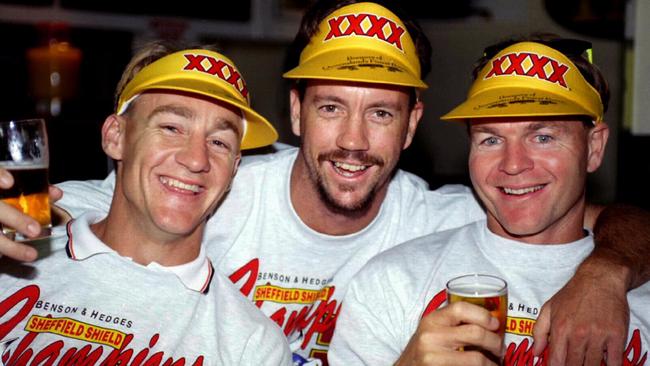
Dirk Tazelaar (257 wickets at 27.43)
Every captain would have wanted an iron willed Dirk Tazelaar in his side. “Dickie’’, as he was affectionately known, was a wonderful Queensland stalwart, a left arm swing and seam bowler who delivered the goods whether he had pain in his back or blisters in his boots. A first class rugby league centre, Tazelaar was tough and just the man to play in Queensland’s historic, first ever Sheffield Shield win in 1994-95. He may not be a national treasure, but he is treasured in this state. He was a Wests stalwart.
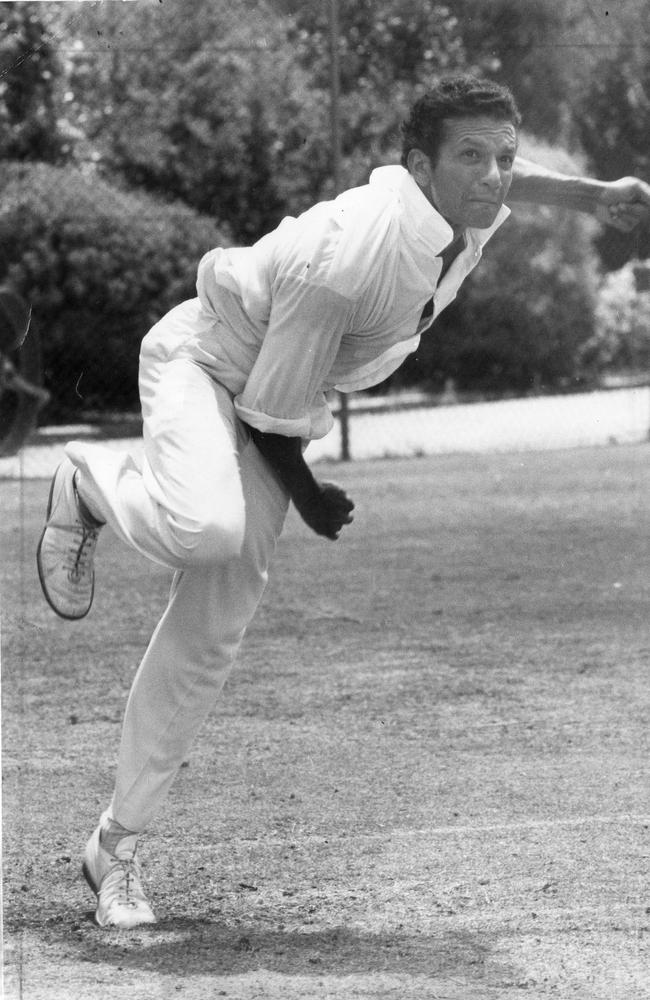
Malcolm Francke (146 wickets at 29.61)
Malcolm Francke was a clever, confident leg-spinner who used to boast he could spin a ball on ice. The former Sri Lankan had a colorful presence in Sheffield Shield cricket throughout the 1970s and 80s and no lesser judge than fellow Queensland leggie and later Test selection chairman Trevor Hohns rated Francke the most underrated player he played with.
Part of his weaponry was getting under the skin of players like Keith Stackpole and Ian Chappell who batted aggressively against him - occasionally to their peril.
OUR GREATEST TEAM SINCE 1975-76
Matthew Hayden (7913 runs at 54.95)
Queensland’s batting battleship who rose from farmlands near Kingaroy where he and his brother Gary would roll a pitch in their backyard. Alongside with the legendary Arthur Morris (NSW), he is arguably Australia’s greatest opening batsman, scoring 8625 runs at 50.73 from 103 Tests. He was also a remarkable one-day opener whose strike rate - 78.96 - was ahead of its time. But he went to the school of hard knocks early.
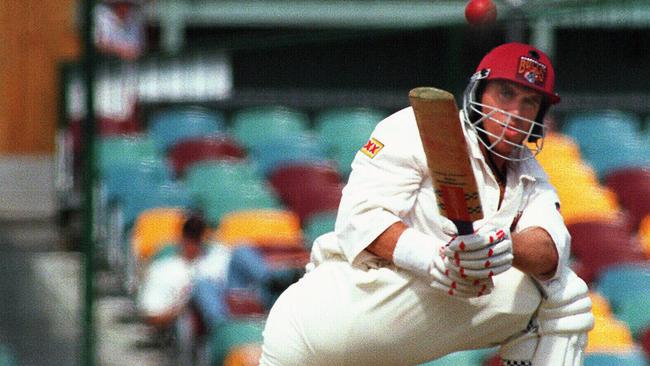
He was dropped from the Marist College Ashgrove First XI side and then failed to make the Australian under 19 side. When he finally made it onto the 1992-93 Ashes tour, he was overlooked again for Michael Slater in the Test XI, and later in the decade dropped twice from Test sides.
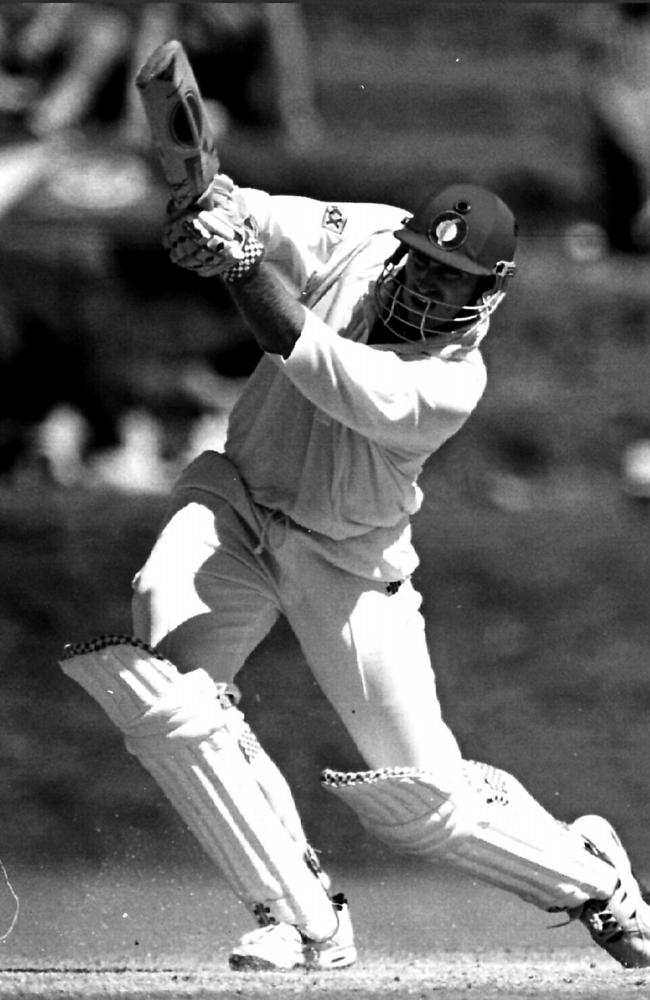
But Hayden was ruthless in his determination and hammered down the door leading to Test cricket greatest. In Shield cricket Hayden produced batting records not seen since Sir Donald Bradman and many attribute his leadership at the top of the Queensland innings for installing confidence and self belief in the batsmen who were to follow. He is a Valley legend.
Usman Khawaja (3357 runs at 45.98)
His formative years were spent in arch enemy country – New South Wales – but he saw the light and moved to the Sunshine State 10 Years ago. A character around the change room, Khawaja’s Test career looked in peril during Justin Langer’s reign, but he refused to stay on the canvas. He has got better with age and has now entered Test champion status, so compelling have his recent returns been. He now has 5004 Test runs at 47.20. Graceful with beautiful timing, he seems to have time - like all the very good ones do.
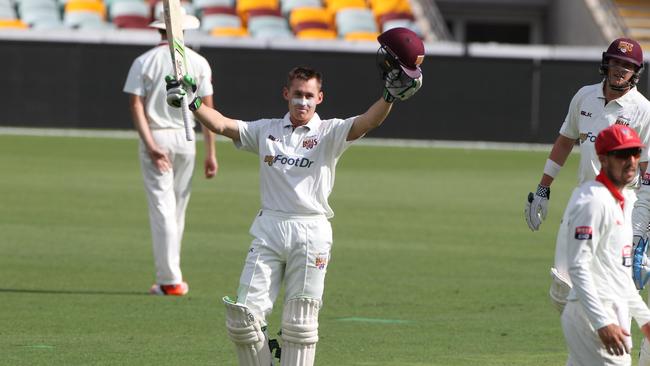
Marnius Labuschagne (4238 runs at 39.60)
A batting boy wonder who turned promise into rising to at one stage be the No. 1 ranked batsman in the world. If he could have studied cricket as a subject at school he would have – such a student of the game is he. He was born to bat and was an elite junior who was on the lips of many as he worked his way through junior age groups. Indeed we first heard about when the late ABC commentator Peter Roebuck uttered his name after observing him playing under age cricket, possibly even at under 12 level, from our memory. He is a great example to young juniors at Redlands.
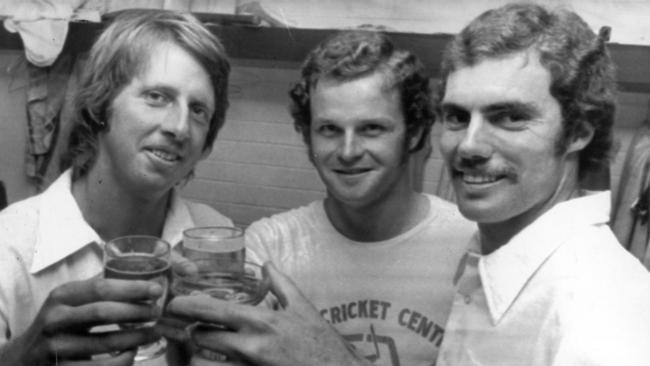
Greg Chappell (5037 runs at 69.00, 56 wickets at 29)
Chappell was the ultimate stylist, and no batsman since has matched his elegance or glorious stroke play. South Australian-born, he played 10 seasons for Queensland, averaging a remarkable 69. Some of his best “Test” batting came in unofficial World Series Cricket (1977-79) when he averaged 58 across 26 Super Tests against the best of the best bowlers, including South Africans Mike Procter and Garth Le Roux (google those names to see some impressive bowling figures).

Sadly those statistics are not included in his official playing record, but, as it is, his 7110 Test runs at 53.86 have him bookmarked as a legend. When you consider he played with small bats, on big fields with no helmet - and in an era when every side had world class bowlers - we are comfortable promoting Chappell as the best Australian batsman since Sir Donald Bradman. Chappell played at Souths.

Allan Border (6779 runs at 54.66)
If you wanted a batsman to bat for your life, then this was the bloke. Highly skilled but tough as nails across 153 Tests, he fortified the Queensland spine when he played every match of the 1994-95 season – the year the Bulls won its first ever shield. His experience on and off the field was invaluable, and at the team’s first meeting in the days leading up to the decider, Border told players to enjoy everything about the lead-up - the back slaps, the media, the hype. Having know doubt witness players crushed by expectation leading into big matches, Border’s comments were aimed to take pressure off the players. It was sound advice as Queensland won its first home Shield final in a canter. He played at Valley.

Stuart Law (9034 runs at 43.85)
Second only to Chappell in terms of being a batting style and pure class, Law captained Queensland to its first five Sheffield Shield titles and forever more will remain etched in Queensland sporting history. He was a schoolboy wonder who played first grade at Valley aged 15 and for Queensland aged 18. Law was so good, batting sometimes seemed to come too easy for him during his formative years. But in an old school era of sink or swim, he swam and later his toughness became renowned.

He played 142 Shield games, scoring 9034 runs at 43.85, but was an even better player than those statistics suggest. Indeed he was a noted big match player who averaged 60-plus in Shield grand finals. Law played one Test, scoring 54 not out.
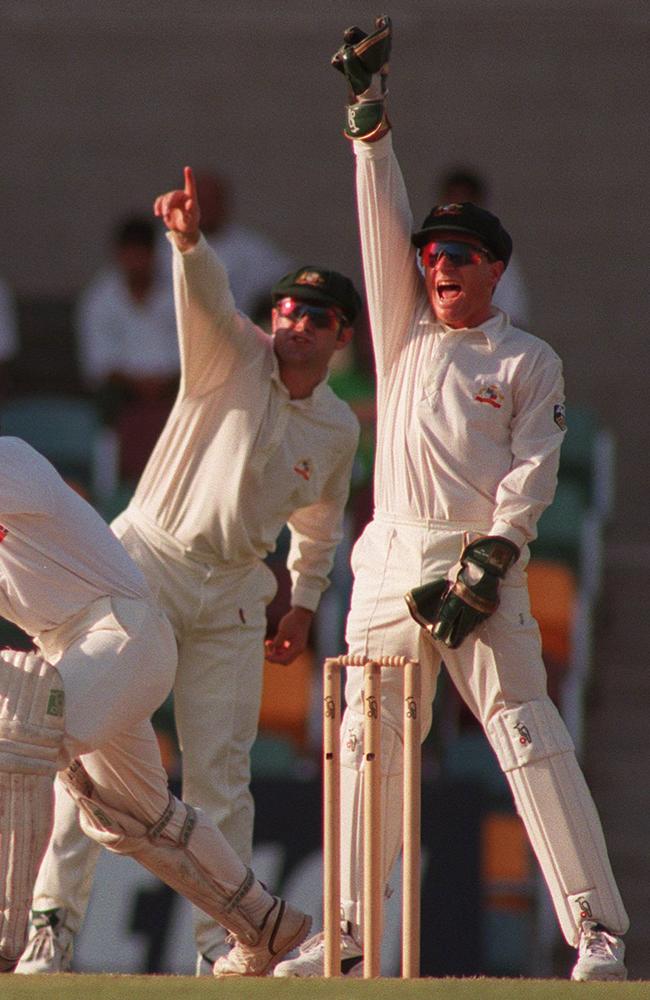
Ian Healy (158 catches, seven stumpings; 1859 runs at 37.93)
Australia’s wicketkeeper of last century, Healy earned his world greatest reputation standing up to the stumps, gloving to the incomparable leg spinner Shane Warne on the dust bowls in India, Pakistan and Sri Lanka. Of course keeping to Queensland’s world class battery of fast bowlers became second fiddle to him, but that glove work against Warne was where he earned his stripes. Healy, tough, gritty who played through injury, was also a positive, run-a-ball batsman ting and instinctive glove work which supported
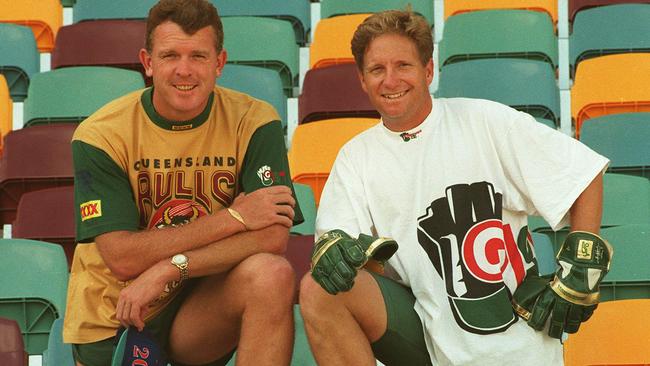
Andrew Bichel (430 wickets at 23/24 and 2591 runs at 22.53)
Simply look at his strike rate – 45.7 across 89 matches. That statistic, above all else, highlights the greatest of right arm fast bowler Bichel. In favourable conditions Bichel’s, late, subtle outswing got him countless wickets, but he was also an effort bowler on dry, barren pitches where his heart the size of Phar Lap would keep him going. From Laidley, he was a captain’s dream and deserved to play more than 19 Tests (58 wickets at 32.2). At times he was also a match winning batsman at No. 8, and his 2591 runs (average 22.53) included two centuries and 10 50s. He was a Souths stalwart.
Craig McDermott (303 wickets at 25.09)
An absolute elite, rolled gold fast bowler who burst into Test cricket aged 18 and who would go on to take 291 scalps for Australia. When his outswinger was going, no fast bowler was better than McDermott. Yet one of his most cherished contributions to the Bulls was teaching the squad’s next generation bowlers how to bowl on flat, dead pitches in Adelaide and on the sub-continent. That skill has now been passed down from generation to generation. McDermott’s legacy lives on.

Michael Kasprowicz (441 wickets at 24.56)
He may have been the Mr Nice Guy of world cricket, yet Kasprowicz still had the fire of a fast bowler burning in his belly. Remarkably he made his Queensland debut while still attending Year 12 at Brisbane State High School, and went on to become Queensland’s greatest wicket taker. Tall, he started as an express bowler, but as his career evolved he could swing the ball around. He also learned to play on dry, dusty decks, and his five wicket haul in India would rank as one of his career highlights. He played 38 Tests (113 wickets at 32.9), with two stand-alone moments for Australia – once taking five wicket hauls in England and India.
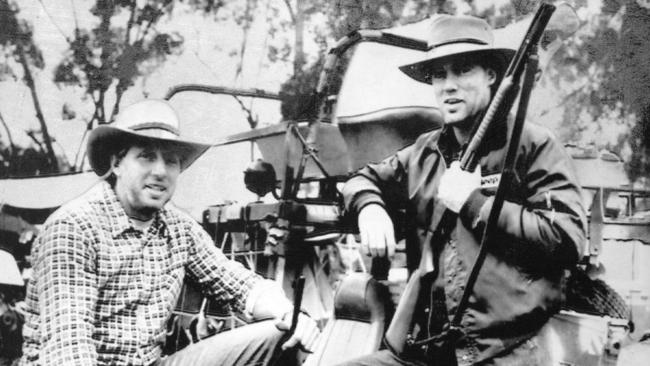
Jeff Thomson (328 wickets at 24.16)
The world’s fastest bowler, Thomson would sling shot deliveries so quickly toward the batsman and the ball would hit their bats rather than their bats hit the ball. He was so quick that one day in Perth Queensland keeper John Maclean was standing 30m behind the stumps - once in Sydney, Maclean was forced back further. “That day in Sydney I was going back probably a metre or two every ball because they were still going up over head height when they were hitting my gloves,’’ Maclean said. “He skidded and the ball kept going up.’’
Maclean, who captained Queensland on 35 occasions, added: “How people didn’t get killed is still beyond me,’’ said Maclean. “I remember one game against Victoria, neither batsman would run a single because they did not want to get up the other end.’’ Bowling for Queensland, Thomson had the amazing strike rate of just 46.2. He was a Toombul terror.

Carl Rackemann (383 wickets at 26.31)
A living legend, Rackemann had a heart to match his size 14 boots. The ball would disappear into those giant farmer’s hands, and an hour later the captain would need a wrench to yank the red cherry from his grasp. At 190cm in height, Rackemann was a nasty fast bowler who would angle deliveries from wide of the crease in toward the rib cage. It is generally recognised that at one stage during the Rebel tours of South Africa in the 1980s, that he was the fastest white bowler in the world. For 15 seasons spent blood, sweat and tears – literally – trying to win a Shield for Queensland and finally, in the twilight of his career, he took the winning catch to clinch the Holy Grail in 1994-95. Earlier, five days earlier and just one hour into the final, Rackemann delivered a rearing short ball to dismiss South Australia’s batting ace Jamie Siddons who two weeks earlier had taken 170 off the Queensland bowlers. That dismissal reduced South Australia at 4-30 and good judges say the Shield was won with the sensational, rising effort ball from Rackemann. Even in the twilight of his career Rackemann was so highly thought of, hours after winning the Shield the Australian selectors immediately rushed Rackemann onto a plane bound for the Wests Indies for what was his last Test tour.

GLARING OMISSIONS FROM OUR TEAMS
Peter Anderson (124 catches, 12 stumpings) and John Maclean (290 catches, 24 stumpings; 3277 runs at 25.20)
There has been some restless nights since we finalised our three teams without including both Peter Anderson and John Maclean. All we can really do is apologise and take soliance in the face that the three glovemen named before them – Ian Healy, Wade Seccombe and Chris Hartley - were also world class at their trade.
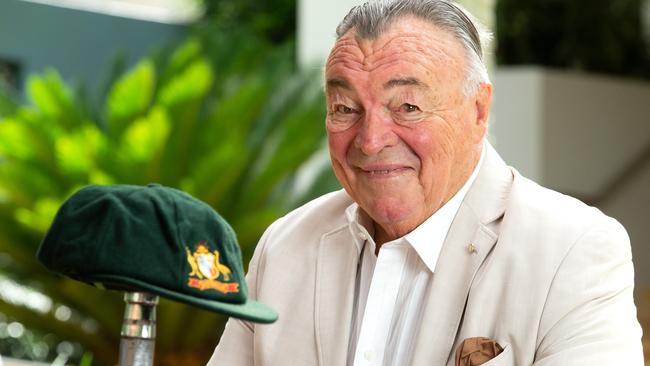
John Maclean: A wonderful multi-talented sportsman, Maclean was a champion gloveman over more than a decade who kept wickets to Jeff Thomson’s thunderbolts.
Queensland’s captain in Greg Chappell’s absence, he was unlucky his career coincided with the great Test gloveman Rod Marsh, but mercifully Maclean did play four Tests, including one as vice-captain. He is a Souths great.
Peter Anderson: Anderson played 56 first class games for Queensland and South Australia between 1986 and 1994, but no statistics do his ability justice. He is so highly thought of that former Queensland strike bowler Tony Dell said of his fellow Churchie old boy: “He was the best keeper I ever saw who fearlessly stood up to the stumps to many medium fast bowlers. It was a crying shame that he didn’t get to play for Australia.’’ Anderson of course infamously gave Ian Healy his start in first class cricket when he broke a finger standing up to the stumps to Queensland’s English import Ian Botham. Healy never looked back, and Anderson was relegated to the state’s No. 2 gloveman.

Special mentions
Ray Phillips (213 catches, 11 stumpings; 2144 runs at 26.14)
A close third behind the omission of Hartley and Maclean from our sides was Ray “Razor’’ Phillips. While he grew up in the Redfern district of inner Sydney playing rugby league juniors for the Rabbitohs – he was always a Queenslander in waiting. He loved his XXXX and was a long-time rep at the brewery who loved their gof days. But most of all he loved the Maroon cap on game day. Phillips was also an outstanding lower order batsman who thoroughly deserved to be named as the reserve wicket keeper on the 1985 Ashes tour. He would have been a great man to have on the team bus on that long Ashes tour. He toiled for Wests in club cricket.
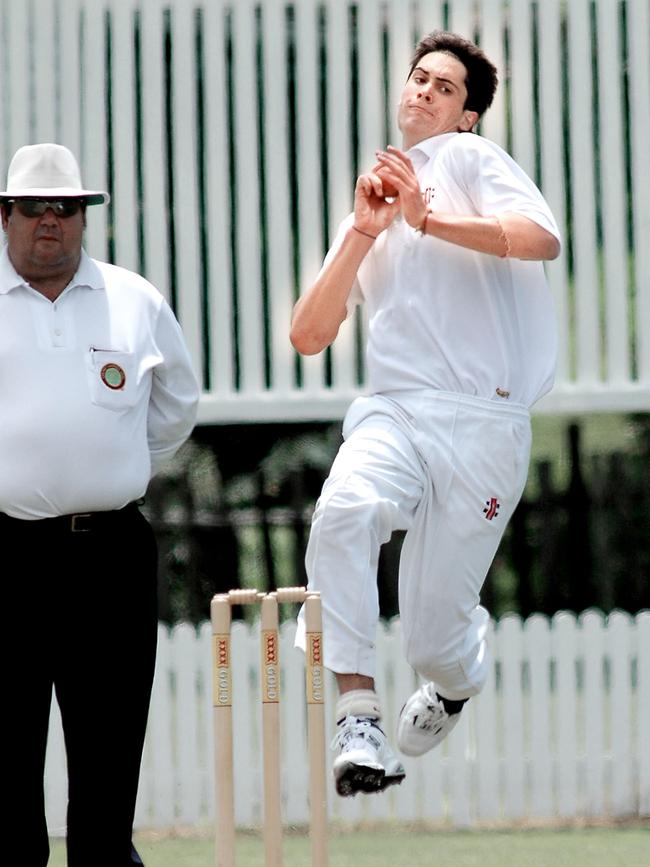
Ben Cutting (1747 runs at 22; 158 wickets at 27)
The younger generation need to know before T20 cricket starting harming the bowling, Cutting was a genuine fast bowling enforcer who took wickets for fun at Sheffield Shield cricket. So much so that he was actually 12th man for Australia at a Gabba Test. He is one of Souths finest.
Jack Wildermuth (141 wickets at 29.82; 2351 runs at 25.55)
From the fertile sporting fields of the Darling Downs, Wildermuth is one of Queensland’s finest allrounders. The grandson of 30-game Shield veteran Graham Bizzell, Wildermuth has two centuries and you get the impression more were just around the corner. He has an outstanding fine record - 141 wickets at 29.82 and 2351 runs at 25.55 - and has two T20 international caps to reflect upon.
More special mentions
Mark Steketee whose 204 wickets at 25.34, with a strike rate of 51.98, has him bordering champion status.
Nathan Hauritz: Another great bloke around the shed, the Test and World Cup off-spinner took 76 wickets, but more than that, his tight bowling offered ideal support to the quicks.
Mitch Swepson: Nudgee old boy Swepson is still a work in progress and his career has many years to run – hopefully. He has 145 wickets at 34.95 for Queensland.
Jim Peirson: The current Queensland captain, Peirson is also an elite batsman and we would not be surprised to see him represent Australia. He already has 2853 Shield runs at 33.56.
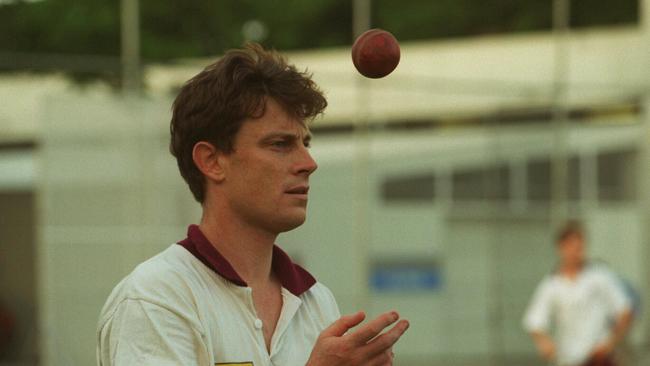
Paul Jackson: A treasure from the golden era of the 1990s, Jackson helped Queensland win its first three Shields. His accurate left arm orthodox spin was the perfect foil to the Queensland battery of last bowlers.
Lee Carseldine, like Martin Kent who we wrote about in our No.3 Team, was another whose career was just starting to heat up when he became plagued by a back injury. A swift left arm change bowler, he scored 2241 runs at 34.47.
Chris Lynn was another who suffered from injury, in his case a shoulder complaint. But before he became the biggest hit in Big Bash cricket, Lynn was building nicely toward Test cricket while playing the red ball game. He scored 2546 runs at 42.43
Chris Swan who was a fabulous swing bowling talent who joined the 100 wickets club (101), taking his wickets at just 25.92.
Andrew Courtice was a stoic opener for Queensland, brave to the core across 49 games who put all his mite into trying to win a Shield. He scored 2758 runs at an average of 34.91 in an era of small bats and long boundaries.
John Maguire: A wonderful medium-fast campaigner who snared 178 wickets for Queensland.

Clinton Perren: Another who got better and better as the seasons rolled by, someone who was an unsung hero in Queensland’s Sheffield Shield success post Allan Border’s retirement. He averaged 34.61.
Greg Rowell: A lanky, long limbed right arm fast bowler, Rowell was a bit of a first innings specialist who was a part of an extraordinary battery of pacemen. good enough to play for Australia A, Rowell took a commendable 116 wickets at 28.
Chris Simpson: Mr reliable with bat in the lower order or as a support leg spinner, Simpson was an outstanding captain.
Cameron Gannon: An unsung right arm pace bowler from Ipswich Grammar School who matched it with the best during his career. He had an elite return across 30 Shield games, taking 103 wickets at 25.11.
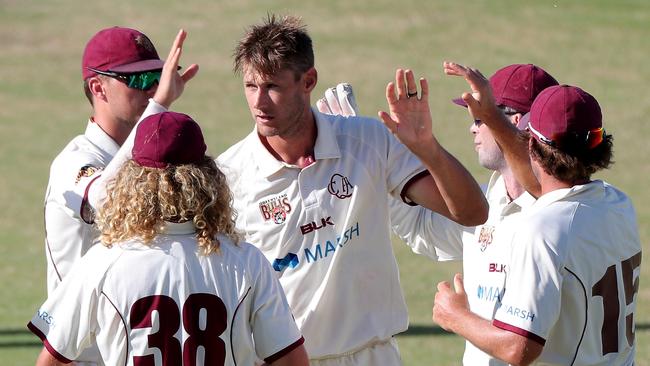
Geoff Foley: A tall, gritty left handed, the defiant Foley put a high value on his wicket.
Ryan Broad: The son of ex-Shield allrounder Wayne Broad, Broad was another grand servant who opened for Queensland. He grafted out eight centuries in scoring more than 3000 runs.
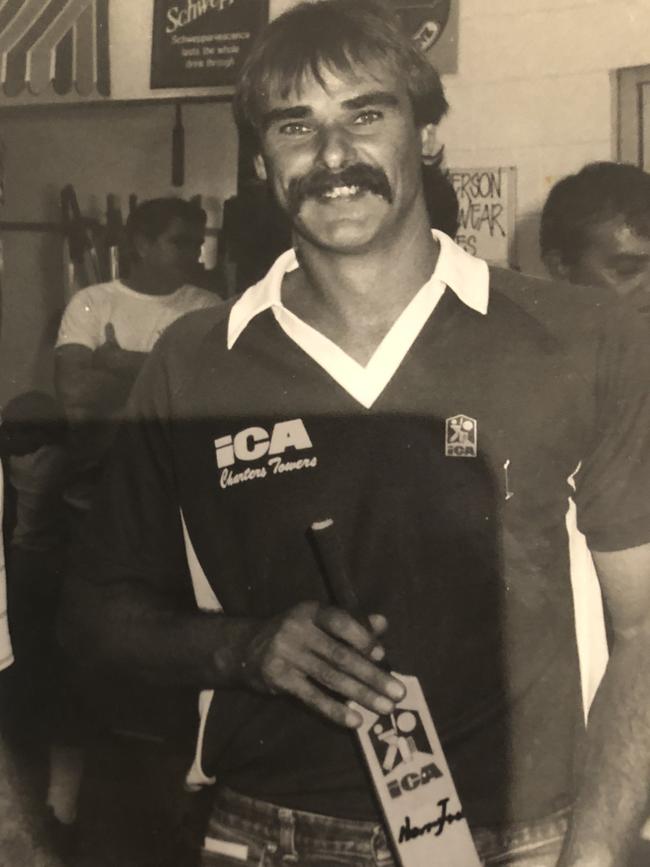
Harry Frei: The Toombul swing bowler would bend the ball like a banana but do you know what we loved most about his Queensland career - belting England great Ian Botham for six after six during a whirlwind half century against the tourists at the Gabba.
Brett Henschell: A tremendous fieldsman, accurate off-spinner and very good batsman, Henschell offered Queensland teams a little bit of everything across his 62 matches for the state.
Cameron Boyce: A tremendous leg-spin bowler whose career highlight was playing T20 internationals for Australia. He is a very good long form bowler who adopted wonderfully to the short game.
Glenn Trimble: The son of the great Sam Trimble, Glenn was a big-hitting top order batsman who was a more than handy medium swing bowler. He played for Australia in a one-day international.
NOTE: Tomorrow, we name our greatest pre-1976 side, and also select our two Futures sides.

Originally published as Revealed: Best Bulls players since 1976 named in Super Sides


